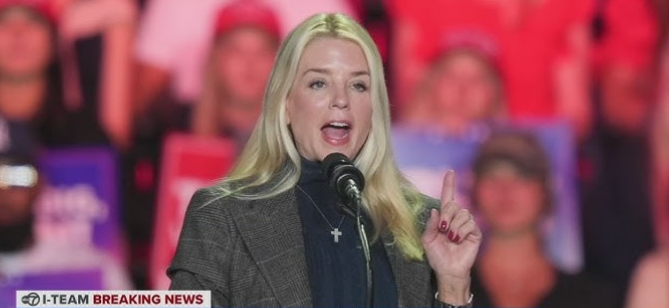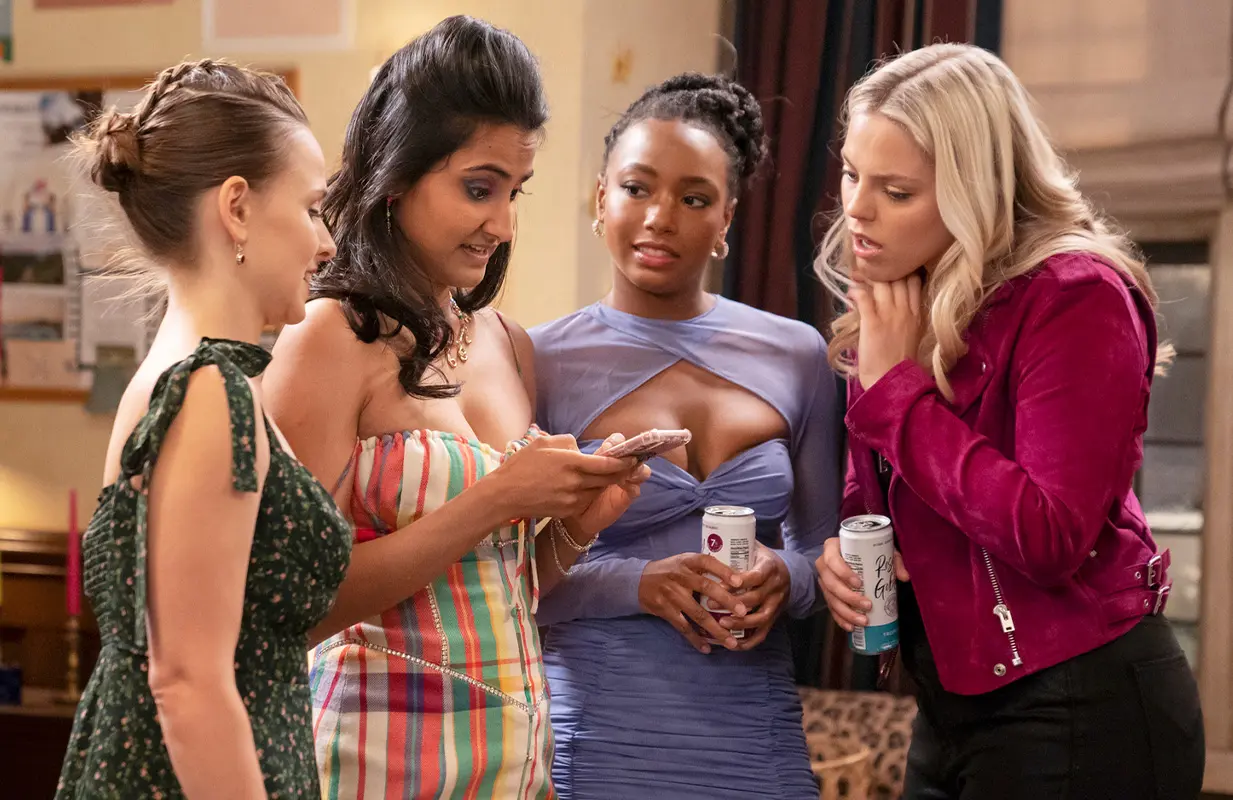Reported by: Jourdan Williams, Columbia University Teachers College graduate student, particularly interested in social justice.
Editor Note: In light of the new book, Manufacturing Hate: How Africa was Demonized in Western Media just released, June 2021, a film deserves to be brought to attention, which addresses relevant issues raised in the book and which also features the author, Milton Allimadi.
The documentary, “A Brilliant Genocide,” was screened at the Columbia University School of International and Public Affairs (SIPA) on 4 October 2017, followed by a panel discussion and book signing to commemorate the release of the book “Another Fine Mess: America, Uganda and the War on Terror.”
The film presents the atrocities against the Acholi peoples in Northern Uganda.
When Australian filmmaker Ebony Butler arrived in Uganda, she initially intended to document the brutality committed by infamous rebel leader Joseph Kony through the eyes of survivors. However, interviews which she conducted uncovered grave revelations of the role of the still-ruling government, in carefully engineering the genocide, and concealing their actions from the world stage for the past 30 years.
Thus, the film evolved into a detailed exposé of the atrocities committed in Northern Uganda by bringing to light two leaders perpetuating the bloodshed, namely, those under Kony, as expected, but also by President Yoweri Museveni, under the façade of a democratic regime.
After rising to power in 1986 through a rebellion led by the National Resistance Movement (NRM), the film asserts that Museveni allegedly fixed the subsequent five elections to remain in power and establish what has essentially been a military dictatorship for the past three decades. Having already abolished constitutional term limits, Museveni is currently working to eliminate the presidential age limit of 75, to ensure his lifetime rule, by asserting that he is 73 years of age despite suspicions that he is much older.
Contrary to the narrative backed by western powers, the film presents that Joseph Kony and the Lord’s Resistance Army (LRA), although also guilty of barbarism, are not the only aggressors in Uganda’s brutal war. Through candid interviews with survivors — many of whom are courageously speaking out for the first time — the documentary details the state-sponsored violence Museveni inflicted upon the Acholi peoples in Northern Uganda, which led to and propagated retaliatory bloodshed by the rebel LRA.
In the film, Museveni is shown in photographs at various celebratory events and meetings, with American Presidents George W. Bush and Barack Obama, as well as with the Pope, the then-new Secretary-General of the United Nations, and other world figures. These images are in stark contrast to the portrayal of Museveni in the film reported by victims of his genocidal conquest for power and prestige. These peoples’ faces and bodies are mutilated and burned, with pain evident in their voices, as they recount torture they endured.
Survivors of the politically motivated multitude of massacres give graphic accounts of strategic raids by the National Resistance Army (NRA). Entire villages were routinely set aflame and their inhabitants forced into earthen pits, covered with layers of wood, sod and soil, and then burned alive. According to the film, this method was the Museveni government’s deliberate attempt to contain the carnage and eliminate any possibility of media documentation [note: there are similarities here to the Rwandan genocide which had been widely publicized].
Joseph Okumu, an Acholi survivor who has remained in his desecrated homeland, painfully recalls witnessing anyone that managed to escape the raids being savagely hunted down and slaughtered, indiscriminate of gender or age, while NRA soldiers taunted their innocent victims with chants of “find you, kill you”.
Josephine Apera, an Acholi woman living in exile, explains how her sister-in-law fled the carnage, with her son tied to her back, and sought refuge in the wilderness surrounding her burning village. NRA soldiers found and executed her, pumping their bullets through the baby’s skull into the mother. To date, their bodies have not been found.
Like many totalitarian potentates, the film suggests that Museveni resorted to terror through tactical violence to secure his rule, and portrays a level of depravity, conspiracy and secrecy with which he waged this campaign, arguably unmatched in recent history.
Interviewees in the film assert that village men were systematically tortured, often purely for the NRA’s entertainment. An Acholi survivor, Michael Anywar, provides a graphic account of NRA troops’ morbid pastime in which two men are hung from a tree limb as a see-saw, then repeatedly dashed against the ground until death. Meanwhile, their countrymen are bound in cue and forced to observe what will soon be their fate. All were executed. Anywar relates that he was the lone survivor only because soldiers mistook his blacking out for his being dead, and discarded his limp body in their eagerness to continue the grotesque game.
Pregnant women in particular were also targets of NRA torture as well as rape. These savage sexual assaults were efforts to force miscarriage, erase the next generation, and heighten the level of fear, through which Museveni tightened his control of the region. Through sobbing, Margret explains that nearly three decades after this tragedy began, many Acholi exiled women and young girls who were ruthlessly attacked remain unable to share their stories due to fear of retribution against themselves and what remains of their families.
The film purports that for the first time in the region’s history, rape was used as a weapon of war against men as well as women, often in front of their families. Perpetrators were almost exclusively HIV positive, with NRA troops specifically being ordered to pass the infection to Acholi men who would then unknowingly infect their female partners. This resulted in a form of covert, almost untraceable, biological genocide as well as leading to a generation of orphans.
These methods of mass murder not only shielded Museveni from direct culpability but also provided a sinister platform for soliciting major international funding to combat the HIV/AIDs epidemic while purporting himself as Central Africa’s champion against the virus. Western powers, the U.S. in particular, readily supported and championed this veneer to the international community, providing significant USAID donations and turning a blind eye to both the annihilation of the Acholi and the mismanagement of medical funding.
Kony’s Lord’s Resistance Army was formed a year after the NRA-led carnage began. Its namesake was derived from a common Acholi saying: “No one will fight for us but us and God,” thereby asserting that the guerilla militia was allegedly founded to defend the Acholi people and the “10 commandments of God” against Museveni and the NRA. However, the violence quickly devolved into retaliatory terrorism of the southern Bantu tribes and eventually indiscriminate violence against all civilian actors.
As the film shows, throughout this period, Kony and the LRA adopted a “with us or against mentality” used to justify unspeakable violence against anyone of any “tribe” whom they even suspected of sympathizing with Museveni’s government. On-screen, graphic images are shown of alleged NRA supporters whose noses, lips and at times entire oral cavities, have been savagely severed, leaving the victims disabled and scarred beyond recognition. Likewise, NRA troops regularly maimed and tortured anyone accused of supporting the opposition. These vile acts were generally based on soldiers’ suspicion alone.
Christine Abol, an Acholi woman whose face and arms are obscured in the film by burn scars and whose ears are literally melted down to stubs, shared how NRA soldiers arrived at her home without cause and accused her of supporting Kony’s LRA. When she attempted to assure them that she was not involved, Museveni’s men doused her in kerosene and then casually set her entire body aflame with a handful of lighted grass. While hospitalized and expected not to recover, Ms. Abol was told that her only two children had been murdered.
Tragically, the Acholi people were not only victimized by both armies but also left without any form of defense, given that foreign powers continuously failed to intervene.
At this point in Uganda’s sordid story, many people are familiar with the conflict and the horrific forced conscription of child soldiers. Whether due to an adult population depleted by the NRA, declining political support in response to violence against civilians, or the simple fact that youth are more easily scared, seduced or forced, into submission, Kony abducted upwards of 20,000 child soldiers to fill his ranks within the first years of combat. In 2003 alone, at the height of the violence, the LRA abducted an additional 10,000 girls and boys, according to the film. These children were tasked with making Museveni “know what it is like to become a victim of war” though ironically they themselves were victims of warfare on all fronts.
In the film, Sylvia Akech, a former child soldier under the LRA, explains how she, like many, does not “understand Kony’s thinking” or his methods of attempting to overthrow the government. Sylvia recounts how the LRA “would order you based on their laws and prayers and based on the boss’s orders” to kill or commit other acts of war intended “ to teach others to be useful and loyal to the cause”. With head hung low, this brave young lady recalls how “If you were not useful, if you were not helpful to the cause, you’d get punished severely”.
The documentary also tours orphanages housing dozens of former child soldiers who survived both the LRA and NRA’s brutality, learn that their parents and next of kin had been lost in the bloodshed.
A strong case is built throughout the documentary that rather than deploying NRA troops to defend even his own Bantu supporters, Museveni used the LRA as a scapegoat for further genocidal conquests in the north, and as an excuse to fortify his army and rule via western funding and weaponry. Human rights researchers now suspect that a number of war crimes for which Kony was convicted are actually attributable to NRA troops intentionally disguised as the opposition. Interestingly, members of Museveni’s military have begun to come forward in recent years and implicate themselves in the atrocities that they concealed behind Kony’s LRA.
Meanwhile, the remnants of the agricultural Acholi tribes in the north were forcibly separated from their lands and moved into NRA “protection camps.” As explained in the film, this final injustice resulted in the loss of an additional 1,000 lives per week. Tragically, this death rate is three times higher than that of Iraq during the Allied Invasion, and greater than that inflicted by the NRA and LRA combined, even in the height of the bloodshed.
In fact, Museveni conveniently brought these settlements into existence at the precise moment in which warfare had begun to die down. Although Museveni cited the Acholi’s own protection from grotesque LRA raids as justification for the Acholi displacement, his NRA forces were routinely stationed at the center of the protection camps. This strategy guaranteed that Acholi would be caught in the crossfire of any ensuing conflict.
Furthermore, these camps were intentionally void of adequate shelter, nourishment, and basic sanitation, the effects of which manifested in a variety of health conditions and compounded the omnipresent HIV/AIDs epidemic.
Like the U.S., the United Nations and its partner organizations poured funding and resources into the manufactured refugee crisis engineered by the Museveni regime. Although many of the medical concerns created by the camps’ abhorrent living conditions should have been easily addressed, the majority of inhabitants were left untreated. Instead, the NRA began to divert aid resources toward political aims in neighboring nations such as the Democratic Republic of the Congo (DRC) while international actors and western powers remained conveniently unaware of the crisis.
A panel discussion followed the film screening, which was introduced by Eugenia McGill, Lecturer and Associate Director of the Economic and Political Development Concentration at SIPA. Panelist Milton Allimadi, publisher of Black Star News and one of the film’s featured experts, gave an impassioned commentary on his long-standing criticism of the Museveni government and the refusal of major media outlets to publish his findings despite extensive supporting evidence. As a result, and to get hi voice out in the public, Allimadi published his article in his own newspaper, Black Star News. He shared his views that avoiding an exposé of Museveni by American media underscores the collusion, and critical role, western powers, like the U.S., have played in allowing Museveni and the NRA to continue to act without recourse. Journalist Allimadi revealed that Museveni went so far as to use U.S. military helicopters to attack LRA battalions which were disarming in neighboring DRC, in order to scatter the troops and reignite the violence.
Panelist Helen Epstein, SIPA adjunct professor, visiting Professor of Global Public Health and Human Rights at Bard College, and author of the text featured at this event, disclosed that Kony agreed to multiple ceasefires and even attempted to surrender to Museveni of his own volition on several occasions. However, she explained, the existence of the LRA and subsequent perpetuation of violence continues to be a steady source of international support and political security for Museveni.
The panelists proceeded to vividly illustrate how Museveni has been implicated in generating intrastate conflict in at least six other regions including the infamous genocides in Rwanda and Congo, and two of the three highest refugee-generating crises since WWII, namely, Somalia and South Sudan. Yet, to date, Uganda is lauded for having some of our world’s most liberal and seemingly compassionate refugee policies. Subsequently, the nation continues to be the annual recipient of at least USD$50 million in UN assistance for children’s programs alone and a steady USD$750 million from the U.S., in addition to undisclosed quantities of military weaponry and support that have remained uninterrupted over the past six administrations.
The discussion pointed out that Museveni has clearly built a business empire by creating conflict and collecting relief funds as western powers are content to not only remain complicit in their silence, but to also purport his pretense of a compassionate democratic state on the world stage.
In support of this view, as recently as June 2017, Museveni was praised for his continued commitment to refugee issues by United Nations Secretary-General António Guterres at the Refugee Solidarity Conference where his international plea for financial assistance with the 20-year influx of purposefully displaced persons did not fall on deaf ears. Notably, Guterres served as High Commissioner for Refugees and chief of UNHCR (the UN refugee agency) from 2005-2015.
Mr. Allimadi emphasized the perpetual denial of justice for the Acholi people, with evidence despite the act that the International Court of Justice in 2005 found Uganda guilty of war crimes during the NRA’s occupation of Congo, to date, not a cent of the ten billion dollars in reparations has been paid nor has any effort been made to collect the debt.
Similarly, a 2006 criminal investigation into Museveni’s personal role in those brutalities by the same court was abruptly halted after a phone call from Museveni to then-UN Secretary-General Kofi Annan, requesting that all investigations be terminated. Mr. Allimadi explained that he is continuing to build support for resuming the investigation and trial of Museveni’s war crimes by the International Court of Justice.
Allimadi pointed out that historically, the majority of Uganda’s atrocities have consistently been attributed to Joseph Kony of the LRA, which resulted in Kony being ranked among the ten most wanted men in the world and a reported one billion dollars expended to capture him. Yet, joint U.S. and Ugandan forces abruptly ceased their six-year manhunt after the release of this film in March of 2016, according to a Resonance FM interview featured on the film’s website with its director Ebony Butler.
The audience attending the film appeared to be deeply shaken by what they had seen, evidenced in their participation in the question and answer period. Among those who spoke were two young men born and raised in Uganda, for whom Museveni’s tyranny is the only regime they’ve known. The first, a gentleman from Southern Uganda, began by thanking the panel, host, and film team for their efforts to disseminate the full story of what truly occurred in Uganda. Despite being a young child when the genocide of the Acholi began, he expressed deep remorse at having not done more to understand and stop the horrors inflicted upon fellow Ugandans in the North, and offered a tearful apology on behalf of those who were in a position to attempt to intervene. The second gentleman’s brief statement echoed these sentiments.
The first speaker proceeded to shed light on how the Ugandan people as a whole continue to suffer long-term. He related the tragic story of a close friend in Uganda whom he’d recently lost to what could have been treatable injuries sustained in a motorcycle accident. Although the friend was immediately rushed to the best hospital in the capital city of Kampala, doctors were unable to provide lifesaving care, given that the public service infrastructure had been robbed of necessary funds and intentionally left to deteriorate, which he attributed to Museveni. This is not an uncommon situation, he said, relaying how alive patients sleep under trees outside hospital walls while beds inside are occupied by dead people, who have not been processed and laid to rest.
He suggested that the audience do a google search with key terms “dead bodies”, “hospital” and “Uganda” to confirm his reported catastrophe for themselves, with the Moroto Regional Referral Hospital as an example.
He added that the majority of local media outlets are prevented from sharing this information with the international community.
Professor Epstein then contributed that this latest display of sadistic inhumanity is likely yet another of Museveni’s schemes to maintain control, particularly among government officials and high-ranking supporters. In the 1960s, the Ugandan healthcare system garnered international respect and was toured by emissaries from Singapore seeking a model for the reconstruction of their own medical networks. In the Museveni era, mortality rates are seven times higher than those recorded under any previous leader. In stark contrast, the president is known to have spent at least USD$150 million on overseas medical treatments for himself and his family, given that foreign hospitals are the only way of ensuring that he, his allies, and their families, receive adequate care, given grossly inadequate local medical services. The President, he said, garners loyalty from others by offering foreign-based medical care and transportation.
Even though the panel was then formally concluded, passionate discussion among the audience continued as they transitioned to the foyer for a reception and Professor Epstein’s book signing, for “Another Fine Mess: America, Uganda and the War on Terror.”
Once of the event organizers explained that since media coverage from within Uganda remains highly filtered, there is a campaign to #EndTheSilence from outside the country, as well as a petition to immediately terminate U.S. funding and military support, which can be signed and shared via this link: www.bit.ly/STOPM7. Some attendees signed the petition and provided contact information to be kept up-to-date with ongoing efforts to share the story of Northern Uganda and obtain justice for its people.
The event celebrating Milton Allimadi’s book, “Manufacturing Hate: How Africa was Demonized in Western Media” is live on October 23, 2021, 4PM -5:30. Click here to register. The event can subsequently be accessed on youtube. The book can be purchased through Kendall Hunt: https://he.kendallhunt.com/product/manufacturing-hate-how-africa-was-demonized-western-media






